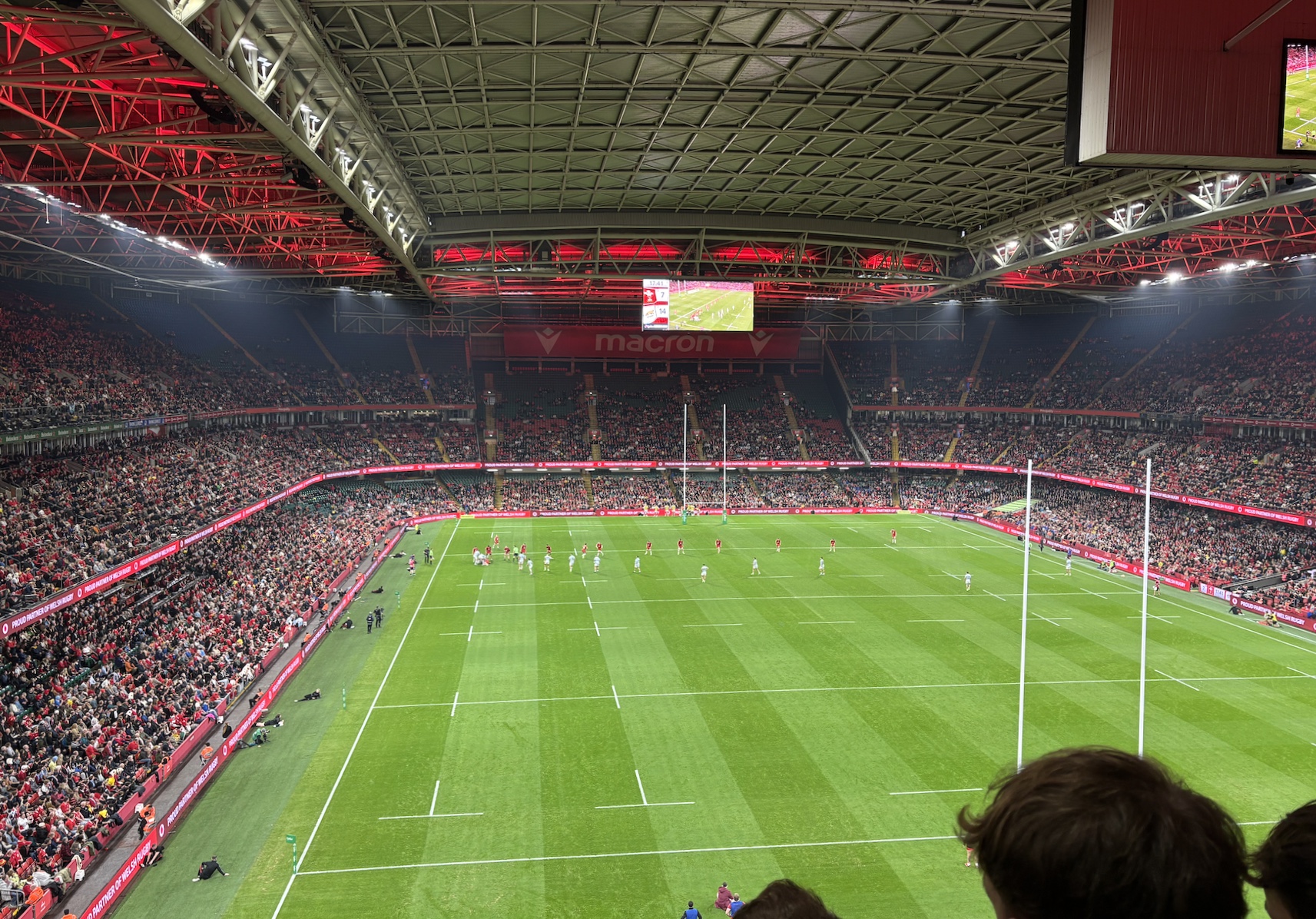By Mike O’Brien
Since the launch of the market-leading PlayStation 4, Sony’s E3 conferences have been storms of momentum, rarely stopping for breath nor the choreographed corporate fun that E3 is infamous for. It’s no surprise then that the PlayStation conference is, for many, the premiere event; for ninety minutes a year, all eyes are on Sony, and that attention seldom goes unrewarded. This year however, Sony defied their own conventions with a strong but quiet (and at times bemusing) display.
For those accustomed to the scope of Sony’s E3 standards, this year’s conference may have come as a bit of a shock. The relative paucity of announcements at the show shouldn’t have surprised anyone however, as they did specify the conference would be focusing primarily on four key titles. It was undoubtedly a more concise showing, perhaps a consequence of the unsustainable avalanche of announcements in recent years, but make no mistake: if one thing is clear, it’s that Sony’s reputation as the pioneering force in first-party cinematic entertainment is going nowhere.

The finest testimony to this claim is the The Last of Us Part II. Ellie, a young orphan-turned-cynic by the horrors of a post-apocalyptic world, finds herself on the precipice of reintegration. She’s nineteen now. But in many ways, Ellie is still a young girl in the way she stands awkwardly at the back of the church, alien to the joys of song and dance that surround her. Though she may have aged, it’s clear that a lifetime of bloodshed with neither structure nor family, where moments of love are fleeted by danger, has left her worldly but naive.
This is a powerful tale, and what impresses most is how succinctly this impression is delivered. The game’s developer, Naughty Dog, positively nails Ellie’s position without a spoken word. We are treated to their excellent dialogue soon after when Ellie enjoys a dance and a romantic exchange with another girl. Even during this embrace, the body language of these characters speaks volumes. At the inception of the dance, Ellie assumes a submissive and uncomfortable stance. She isn’t dancing as much as she’s being eased like a scared animal. But as the conversation progresses, the tension and the stiffness subside. No longer do her eyes linger in a thousand yard stare, anticipating an invisible threat – now they lie in the eyes of a lover. And then in an instant, we’re taken somewhere else. Somewhere decayed and laden with ivy and mud, where Ellie’s knife is plunged into a man whose dying whimpers are muffled by a bloody hand.
It’s a grotesque and unsettling scene, one fueled by hatred and despair. It’s this very polarity that characterises Ellie’s journey in The Last of Us: Part II. A coming-of-age killer, a girl whose propensity for vengeance and bloodshed stands at odds with the human cravings of an awkward adolescent. This demonstration, and perhaps Naughty Dog’s titles in general, epitomises Sony’s mission statement as a publisher: this ten minute promise of grit and class, made platinum by stellar stealth-action gameplay, is just one of Sony’s plentiful masterclasses in interactive entertainment.

Sony’s cinematic appeal is not limited to the complexities and limitations of the human condition however. Following The Last of Us: Part II was a gameplay demo of Ghost of Tsushima, a samurai action game set in the 13th century Mongol invasion of Japan. Visually, the game is excellent; Japan’s natural beauty is at full display here, from the distant landscapes to the windswept fog of palmate maple leaves. In the context of combat, excellent animation work conveys a much-needed sense of fluidity in a setting defined by precise strikes and disciplined swordsmanship. Storywise, Ghost of Tsushima did not particularly compel me – but developer Sucker Punch (of inFAMOUS and Sly Cooper fame) is famed moreso for tight and responsive gameplay mechanics than narrative prowess. In that department, Ghost of Tsushima has a curious pace. Unlike other samurai action games, like Nioh, Ghost of Tsushima is not a bombastic slashfest but rather a patient affair of anticipation, openings, and counters – though not enough combat gameplay was shown to discern much else. Beyond combat, the game features parkour elements similar to Assassin’s Creed. Along with horseriding, which we also saw relatively little of, these three mechanics seem to be the pillars of Ghost of Tsushima – and it doesn’t look half bad.┬á
Sick of superheroes yet? Me too – but Insomniac Games (Ratchet and Clank, Spyro, Resistance) have me intrigued with Spider-Man. It features an array of series villains if you’re into that – Kingpin, Rhino, Vulture, and Mister Negative (no, I’m not making that last one up) – but the real intrigue is in the gameplay. If you’ve ever played any instalments of the Arkham series of Batman games, or any of its inspired offspring (Middle-Earth: Shadow of Mordor), you’ll be instantly familiar with Spider-Man’s furious man-vs-many fisticuffs. It’s a great fit for the series, and canonically speaking, slowing down time fits in very nicely with spidey sense. With its weighty yet fluid physics-based web-slinging and impractical yet irresistibly flashy combos, I daresay it warrants comparison to the gold-standard Spider-Man 2 (PS2) that every Spider-Man game will apparently be compared to until the heat death of the universe. It’s out on September 7th, and you’ll only find it on PS4.

Then we have Death Stranding, which is hands down the strangest game I’ve seen in years. Brought to us by the convoluted, twisted, and desperately-in-need-of-psychiatric-help mind of Hideo Kojima, this game has been shrouded in mystery for a few years now, making appearances at Sony’s E3 conferences and The Game Awards with short trailers that yield more questions than answers. This year we received an extended look at the game which shed light on some of the game’s core concepts. Well, sort of. You see, the viewpoint character, played by Norman Reedus, navigates a hellish version of Earth, which may or may not be flipping between alternate dimensions, and he carries a baby around with him in some sort of vat because the world is plagued by invisible monsters who leave oily footprints and have some sort of temporal control. It’s a very disturbing and abstract game, which is exactly what we want from Kojima – but we still have no idea how this game actually plays. So far the only gameplay footage we have shows Norman Reedus having a long old stroll. Though I and many others are eager to see some mechanics at work, a crucial part of Death Stranding’s intrigue is the mystery enveloping it. Whilst showing some of the core mechanics would assuage more concerned consumers, I doubt Death Stranding would be the object of much fascination if our glimpses of it comprised of uncut gameplay. Kojima has alluded to the fact that Death Stranding may be the inception of a new genre altogether, in the same way his flagship work Metal Gear invented the stealth game – but it’s hard to say without the bigger picture. It’s certainly a new genre of weird, that’s for sure, and it’s coming exclusively to PS4 at some point.
On the subject of the morbid and horrific,┬áResident Evil 2┬ámade a blockbuster appearance to steal the headlines. It’s a game many have been anticipating for over two years, and Capcom are certainly confident about it. Despite initially announcing┬áResident Evil 2┬áas a remake of the PS1 title, the company has since disavowed the use of the word ‘remake’, claiming that the game is an outright reimagining of the original game’s fabric. Whilst the core tenets we all know and love are still in place – Leon Kennedy, Raccoon City, and so on – it’s a substantial departure from the source content in the best possible way. Gone are the days of atrocious PSX-era voice acting┬áand sluggish combat. Despite their campy charm, they are not missed here. Indeed, it’s impressive that Capcom have been able to remain this faithful to the iconic staples of┬áResident Evil 2┬áwhilst overhauling its identity completely. In terms of gameplay, it’s a return to┬áResident Evil‘s traditional over-the-shoulder survival horror gameplay, where every bullet counts against the twitching, shambling scores of undead in your unsteady sights. A promising display indeed.

In terms of new announcements, Sony brought Control, a surreal Remedy-developed third-person shooter. Superficially, it’s reminiscent of another Remedy game, Quantum Break, but despite sharing a genre and some visual effects, the similarities end there. It’s a bizarre mix of the familiar and the strange, with seemingly regular environments shapeshifting violently, whilst bodies float in a gravityless room waiting to snatch and maul the player. Not much is known about this game other than its platforms (PS4, Xbox One, and PC) and that it’s coming next year, but it’s certainly one to watch. We also got a sequel to Team Ninja’s soulslike samurai action game with the teaser of Nioh 2, whilst From Software add yet another title to their schedule with the curious story adventure game D├®racin├® for PlayStation VR.┬á
All in all, Sony’s E3 showcased a strong albeit safe roster of games with a few welcome surprises – but unquestionably, their biggest shortcoming was in the delivery of the conference itself. Much to the bemusement of viewers and games journalists alike, the trademark forward momentum of Sony’s conferences was unfortunately lost this year to a series of presentation blunders. Instead of hosting a regular press conference, this outing took place in a small church-like venue, which was eventually revealed to be a replica of The Last of Us: Part II’s church at the start of the conference. A nice touch – but after the demo, the broadcast was interrupted by the kind of chatter you might expect from a pre-show, whilst journalists were ushered into a different venue for the next part of the conference. After reaching the final venue, some games were prefaced by unnecessary live performances which, whilst impressive, did dull the momentum.

In many ways, this year’s unceremonious presentation felt distant to the sophisticated and unhindered flow of Sony’s previous years, but no showmanship is shoddy enough to undermine the sheer quality of the games on show. There’s something for everyone here; for gaming’s cinephiles, The Last of Us: Part II offers a gritty but human experience in what could rank amongst the finest examples of artistic achievement in the medium. For thrillseekers, Ghost of Tsushima and Spider-Man are sure to keep players taking stances and trading blows. For lovers of the quaint and the different, D├®racin├® is sure to satisfy VR’s keenest adventurers. For the slaves to the sinister, there’s Control. And for those of you so far off the deep end that only the darkest machinations of everyone’s favourite lunatic will stir your soul, there’s always Death Stranding.
For all things video games, stick around at Quench!



